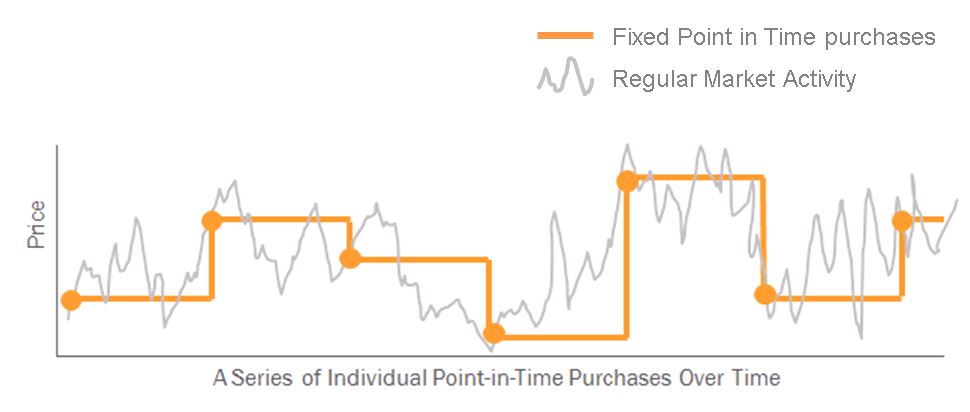Commercial, Industrial, Power Prices - June 3, 2016 - By Constellation
Fixing your price doesn't always fix your problem
Sponsored by Constellation
You need budget certainty; you have numbers to meet this month, but unpredictable power costs can make planning for your business challenging. You may also have stakeholders worrying about the predictability of your operating costs, and with energy being one of the top five costs to most businesses, it’s important to reduce risks as much as possible.
A single point-in-time fixed price contract feels safe, but it may not be achieving the goals you are reaching for.
With this strategy, you're relying on a single day, but with weather events, market conditions and economic changes that impact energy prices, timing the market is a gamble. What's often forgotten is that each, new single point-in-time fixed price purchase is a new gamble. To illustrate, say you are getting ready to purchase power. To try to account for the unforeseen, you choose to go with a Fixed Price RFP approach this year, and you successfully achieve an energy price within your budget. But are you sure this is budget certainty?
In reference to the graph below, within the contract period, you have budget certainty, but at the start of each new contract you have to go back to the marketplace and get a new price. Have you ever found yourself crossing your fingers hoping that your price will be better than last time? Looking at it this way, a series of fixed price purchases over time appears more risky than it did before.

A short-term view will not achieve the long-term solutions your business needs. A flexible, long-term strategy can. By thinking and acting long-term, you can have the security of a fixed price and the flexibility to respond to market conditions. Strategies exist in which you can purchase small percentages of load over time based on market activity which combines both fixed and index pricing. Though the involvement of an index price may seem daunting, the graph below demonstrates that this can successfully provide longer term certainty and help your business manage to the mean.
To put this theory to the test, the Constellation team observed the performance of six hypothetical strategies over a 10-year period. The study shows that a blended strategy remains the most consistent and reliable over time. Our team is currently extending the view of the study to include years 2013 through 2016 to continue to evaluate the performance of different purchasing strategies.

In all, rigid and inflexible "set it and forget it" procurement strategies can make it harder for energy managers to actively manage and document costs. Companies that follow a strategic plan can track data and budgets, monitor energy markets, and proactively mitigate risks. Because energy can affect other areas of your company (from finance and treasury to the production floor), understanding your company’s overall objectives while building an energy strategy can save you from problems down the road and can serve as a key player in helping meet overall company objectives.
Fixed price doesn't always fix the problem. But a blended strategy with a long-term view can.
 This is the second in a series of columns sponsored by Constellation addressing the interests of Smart Energy Decisions’ readers. For more information on this topic, read Constellation's white paper, "A Study of Electricity Procurement Strategies: How Fixed Price, Index & Blended strategies performed over 10 years of rising & falling power markets," by clicking here.
This is the second in a series of columns sponsored by Constellation addressing the interests of Smart Energy Decisions’ readers. For more information on this topic, read Constellation's white paper, "A Study of Electricity Procurement Strategies: How Fixed Price, Index & Blended strategies performed over 10 years of rising & falling power markets," by clicking here.
Read These Related Articles:
Stay Up-To-Date











